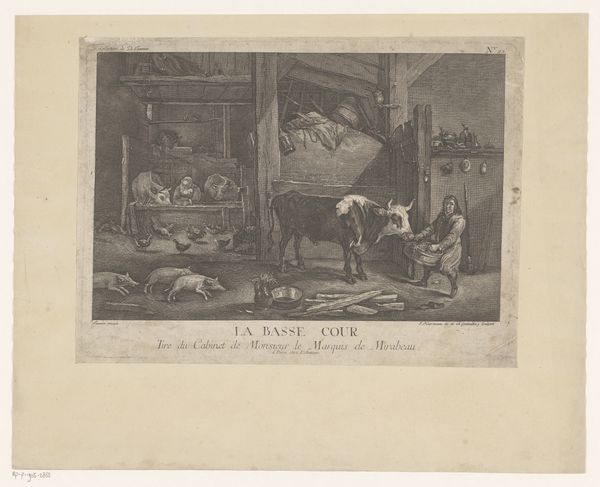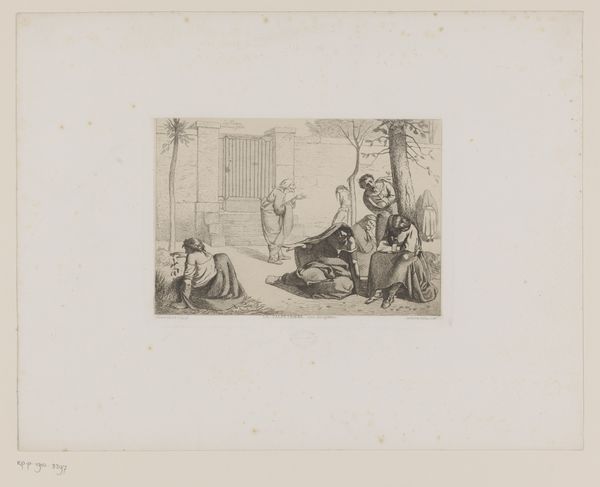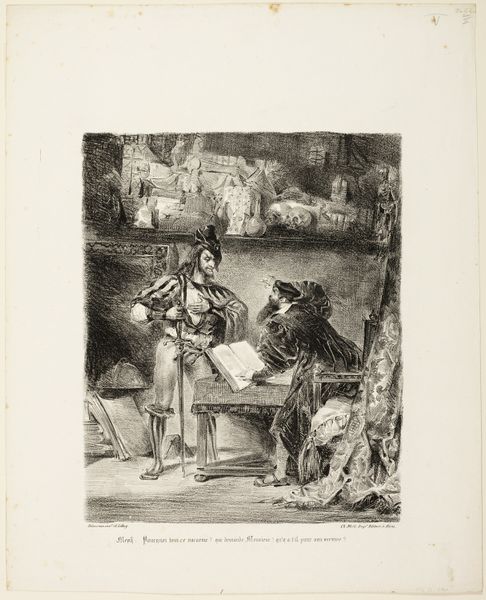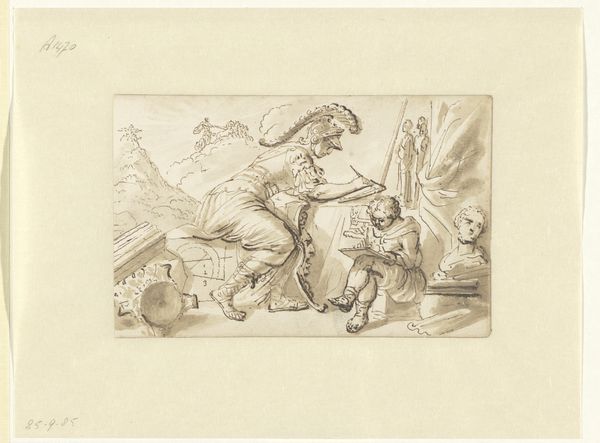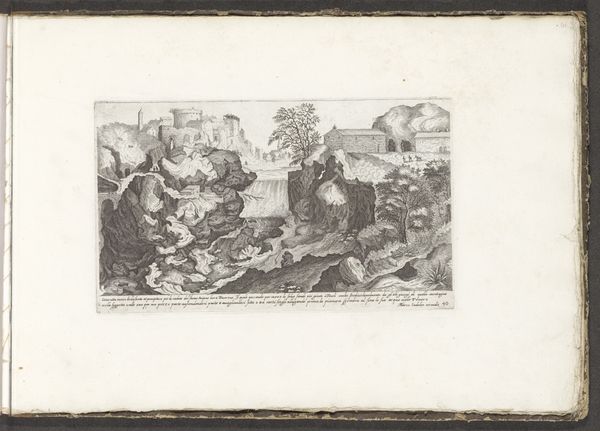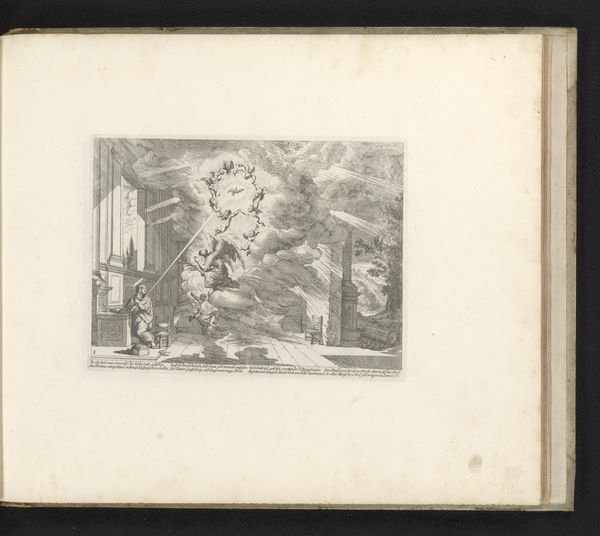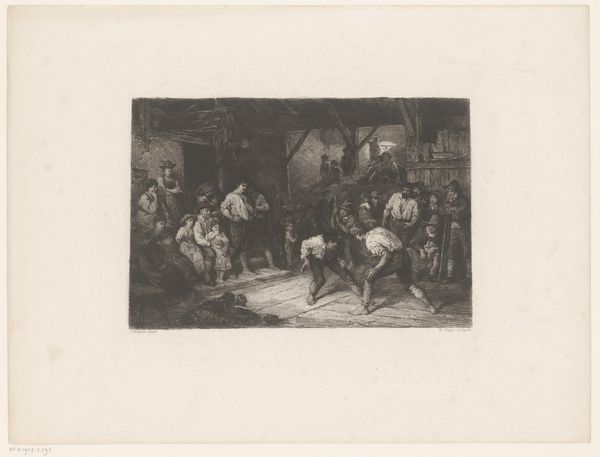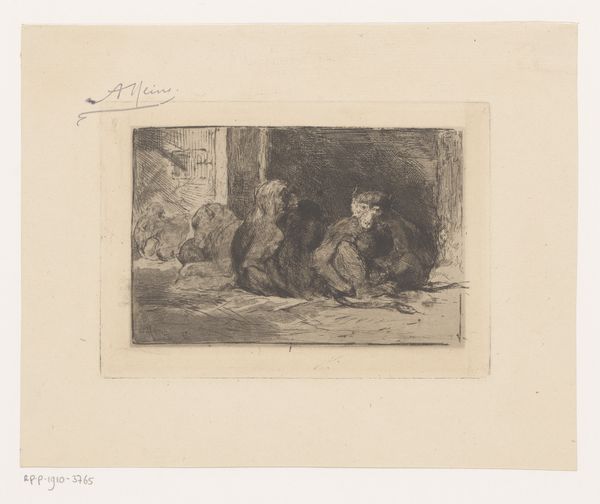
drawing, print, etching, paper, ink
#
drawing
#
ink drawing
#
narrative-art
# print
#
etching
#
etching
#
paper
#
ink
#
genre-painting
Dimensions: 190 mm (height) x 220 mm (width) (bladmaal)
Editor: We're looking at Niels Skovgaard's etching, "For tre skillinger," created in 1912. It depicts a chaotic scene with someone seemingly falling out of a fireplace, contrasting with a rather calm figure at a table. The whole image feels very… theatrical, almost staged. What do you make of it? Curator: Well, the theatricality you observed is intriguing. I wonder what kind of audience would be most receptive to a staged moment like this? Etchings like "For tre skillinger" were often circulated as prints, reaching a broader audience than traditional paintings displayed in elite salons. Editor: So, it was for popular consumption? Curator: Precisely. Now, consider the title – “For tre skillinger,” or "For Three Shillings." Shillings were a common currency, so the phrase hints at accessibility and the cost of admission – what societal stories might be available "for three shillings?" Editor: Ah, that's clever! So, it's like the price of entertainment for the masses back then? Curator: In a way, yes. What I see here is a commentary on class and performance. A gentleman at a table undisturbed by chaos, as someone plummets into view. Think of where these prints were displayed and shared. Are they reinforcing or critiquing this kind of scene? Editor: I see what you mean. Was Skovgaard trying to make us think about the roles we all play in society based on our status? Curator: It's possible, isn't it? Especially during a period of rising social awareness and changing class structures. Also, it is interesting how he uses the print medium to do so. What effect do you think this scene would have in color or as a larger painting? Editor: That's a good question. I imagine a painting would almost romanticize it and give the scene legitimacy. The rough lines of the etching feel raw, maybe highlighting the awkwardness of that unexpected entry. Curator: Precisely! Now, after thinking about its place and reception, would you consider this work mere genre painting? Editor: Not at all. Thinking about who it was made for really opens up this image, makes you think about how we receive art based on presentation. Curator: Absolutely. It reminds us that art doesn't exist in a vacuum. The story of art's movement through society is equally as valuable.
Comments
No comments
Be the first to comment and join the conversation on the ultimate creative platform.


